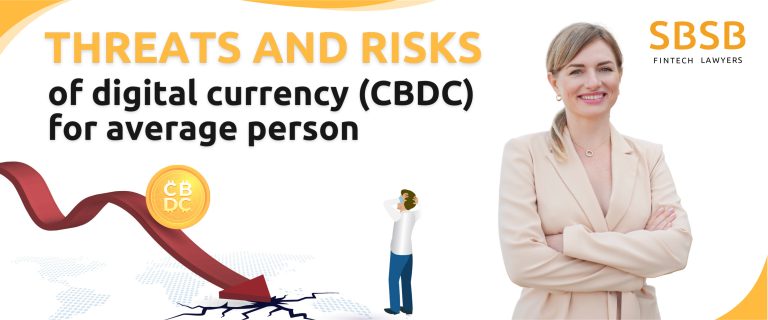Prospects for international crypto regulation
Recently, the European Parliament and the European Commission have provisionally agreed on the regulation project aimed at the…
Recently, the European Parliament and the European Commission have provisionally agreed on the regulation project aimed at the cryptocurrency market called Markets in Crypto-Asset Regulation (MiCA). We can already notice certain principles by which respective authorities worldwide will highly likely regulate the crypto asset projects. MiCA is the first forthcoming international regulation in the largest single market on the planet aimed at cryptocurrency businesses.
The European Union (EU) is ready to become a global pioneer to set the standards of a comprehensive crypto regulation that many other jurisdictions may integrate into their own crypto legislation or at least use MiCA as a reference. The planned stablecoins regulation in the United States (US) is postponed. However, there is a high chance that the US regulation may derive certain principles from the MiCA to at least partly harmonize such an international industry as crypto. That is why it is essential to understand the logic of how European lawmakers want to treat crypto businesses.
Today we can already notice and highlight the critical trends by which the international regulation of cryptocurrency is very likely to occur.
1. Crypto-asset service providers (CASPs) will be regulated similarly to financial institutions. Recognizing cryptocurrency providers as a particular type of financial institution will entail several specialized requirements that businesses must adopt. Such conditions will include:
- substantial authorized capital;
- strict rules for the protection of customers’ funds (including legal liability of a company for the loss of such funds);
- specific cryptocurrency exchange listing compliance procedures;
- maintenance of reliable cybersecurity systems;
- good business reputation of the company’s top management;
- regular employee training;
- Directors & Officers (D&O) and/or Professional Indemnity (PI) insurance coverage;
- prevention of market abuse practices (wash trading, insider trading, “pumps” and “dumps”, etc.) on cryptocurrency trading platforms;
- adherence to the conflict-of-interest policy rules concerning CASP’s employees and management;
- regular account statement reporting to clients;
- record of all client transactions (including trades) on the blockchain.
2. Cryptocurrencies will be divided into four types with different rules applying to a specific token type:
- stablecoins (also called ‘e-money tokens’) (pegged to a single fiat currency);
- utility tokens (tokens issued to finance the development of a crypto project that may also be used to purchase a product or service offered by the issuer of such a token);
- asset-referenced tokens (pegged to a basket of currencies, commodities, or crypto-assets);
- security tokens (crypto tokens that bear the characteristics of a security instrument).
3. Stablecoins will be regulated similar to electronic money, with the requirement for the issuers to hold a certain amount of their own capital, segregate customers’ funds and comply with rules of reserve capital investment (it will be allowed to allocate such capital only into highly liquid and low-risk assets). There is also a high probability that lawmakers may introduce a maximum cap on the volume of daily transactions using stablecoins (as MiCA already does), since such tokens may very well pose a threat to national currencies. Such features of stablecoins as low transaction fees, round-the-clock network availability, and absence of bank-like financial monitoring on incoming and outgoing transactions, are all significant advantages over using traditional fiat money operated via highly regulated financial institutions. This is a risk some national governments already understand, so they started to work on their own digital currencies known as Central Bank Digital Currencies (CBDC). We will see how this rivalry will unfold; however, it is almost certain that in the future, there will be regulatory pressure put on stablecoins, making them less flexible and liquid.
4. Security tokens will be traded on specialized exchanges and fall under similar laws applicable to the offering of securities, including prospectus document requirements and disclosure of corporate information. Most likely that specialized securitization funds will act as issuing entities for security tokens.
5. Decentralized Finance (DeFi), Decentralized Autonomous Organization (DAO) and Non-Fungible Token (NFT) sectors will become subject to the Anti-Money Laundering and Combating Financing of Terrorism (AML/CFT) rules. For now, it is not yet quite clear how in practice these rules will apply to such innovative spheres of the crypto industry. Nevertheless, European lawmakers have already expressed their intent to apply AML/CFT rules to DAO and DeFi that are controlled directly or indirectly, including through smart contracts or voting protocols. Similar financial monitoring rules may as well apply to the NFTs as, in most cases, they are indeed traceable on the blockchain, technically allowing for their origin and trades to be monitored.
6. Anonymous cryptocurrency will be considered a high-risk asset, which will be difficult to use and convert, as regulated cryptocurrency platforms will be likely banned from offering and trading it.
7. Crypto ‘travel rule’ that requires the cryptocurrency transfer service provider to disclose the cryptocurrency sender’s identity to the cryptocurrency receiver’s service provider, will become a norm almost in every jurisdiction. Only peer-to-peer transactions from one unhosted wallet (the crypto wallet over which its user maintains complete control) to another unhosted wallet will remain relatively private means of transacting crypto tokens.
As can already be seen from the proposed methods of crypto regulation in the EU, the legislative momentum has been given with quite an understood tone of the proposed rules. National governments will require a certain level of customer interest protection from cryptocurrency service providers, responsible issuance of crypto tokens (including its effects on the environment from mining mechanisms), and analogous governance for tokenized securities as for the traditional form of this financial instrument. Having control over stablecoins, which pose threat to a governmental monopoly to control the movement of national currencies, is also one of the essential aspects of the regulatory objectives. AML/CFT rules will be comprehensively applicable, including decentralized products. The crypto ‘travel rule’ will make it harder for people and companies to interact privately with cryptocurrencies.
All of the above constitute a natural legal adoption of innovative technologies that is required for the industry to make it safer for customers and more controlled for the governments. The cryptocurrency industry may significantly benefit from its widespread regulation as it will make it less risky and thus more attractive for investment by large institutions and later adopters. An alternative path for the cryptocurrency industry would be a total government ban, prohibition of mining, transaction, service provision, and any other activity in the industry. However, since this industry has already managed to grow quite successfully, for the national governments it already seems almost impossible to stifle it in the bud. Therefore, for legislators worldwide, the task is to regulate the cryptocurrency industry rather than fight it.










